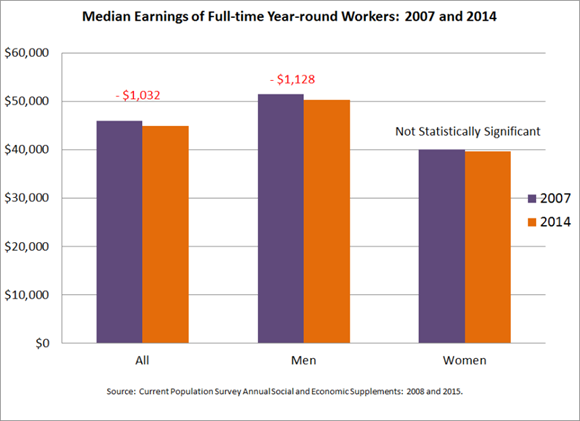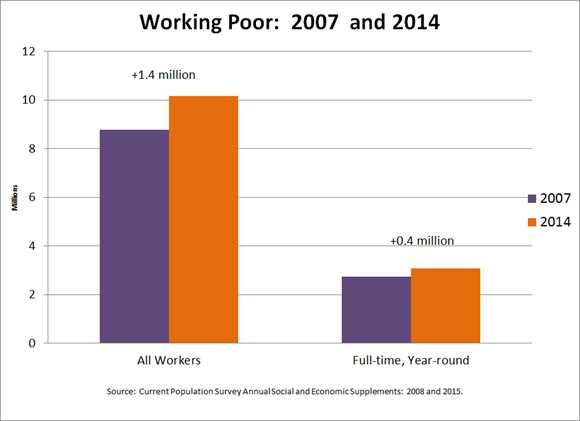
An official website of the United States government
Here’s how you know
Official websites use .gov
A .gov website belongs to an official government organization in the United States.
Secure .gov websites use HTTPS
A lock (
) or https:// means you’ve safely connected to the .gov website. Share sensitive information only on official, secure websites.
-
//
- Census.gov /
- Census Blogs /
- Random Samplings /
- Employment, Earnings and Poverty Estimates for Workers 2014: Some Signs of Economic Recovery but the Evidence is Mixed
Employment, Earnings and Poverty Estimates for Workers 2014: Some Signs of Economic Recovery but the Evidence is Mixed
Employment, Earnings and Poverty Estimates for Workers 2014: Some Signs of Economic Recovery but the Evidence is Mixed
According to new data released today by the Census Bureau from the Current Population Survey Annual Social and Economic Supplement, there were 160 million workers with earnings in 2014. This is 1.4 million more workers than in 2013 and 1.3 million workers more than 2007, the year before the most recent recession. The increase in the number of workers between 2013 and 2014 was not statistically different from the 1.3 million increase since 2007.
And more people are working full-time year-round. Between 2013 and 2014, the number of full-time, year-round workers increased by 2.8 million and the number of people working part-year or part-time fell by 1.4 million. About 68 percent of people with earnings worked full time, year round in 2014, one percentage point higher than in 2013.
The number of full-time, year-round workers in 2014 was not statistically different than the number of full-time, year-round workers in 2007, the year before the most recent recession. There were, however, 613,000 more full-time, year-round working women in 2014 than in 2007. For men, the difference between the 2014 and 2007 estimates was not statistically significant.
Median earnings, however, have not yet recovered to their 2007 levels. Median earnings for all full-time, year-round workers were $45,006 in 2014, 2.2 percent lower than the 2007 median. Median earnings for women were not statistically different from the pre-recession level while the real median earnings of men working full-time, year-round were 2.2 percent lower in 2014 than before the recession.
Poverty rates for the working age population (ages 18 to 64) also tell a mixed story. The poverty rate for all workers in 2014 was 6.9 percent. The poverty rate for those who worked full-time, year-round was 3.0 percent. Neither of these rates were statistically different than the 2013 poverty rates.
While the poverty rate for all workers declined from 7.3 percent in 2012 to 6.9 percent in 2014, it remained higher than the pre-recession poverty rate of about 6.0 percent. As a result, there were 1.4 million more workers and 350,000 more full-time year-round workers living in poverty in 2014 than in 2007.
Share
 Yes
Yes
 No
NoComments or suggestions?


Top



